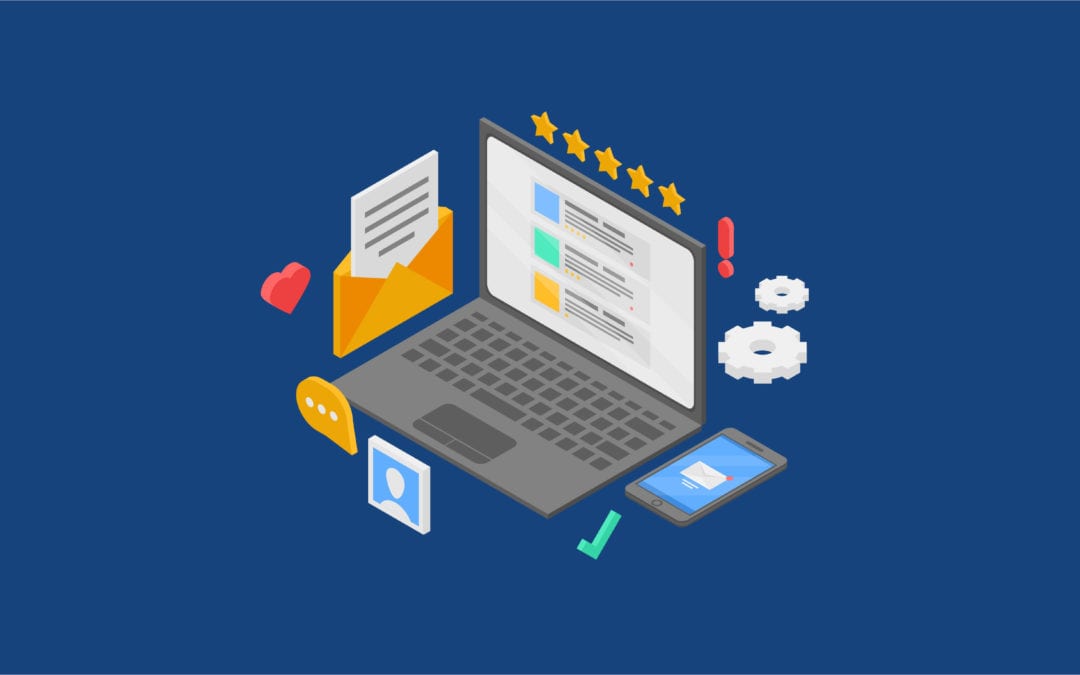Dental practices have adapted quickly to the realities of COVID-19 and are now busier than ever. Luckily, with the right tech, doctors can automate their dental practices for improved efficiency and growth.
Dental practices were quick to adjust to the new normal, putting in measures and protections to ensure their patients’ safety. As a result, people are returning to the dentist, and schedules are filling up. With patients starting to come in again and having to deal with new safety protocols, ensuring that the rest of the operation runs smoothly isn’t going to be easy.
Fortunately, there are ways to streamline operations through automation.
Automating your office doesn’t mean replacing anyone on the team. Rather, it makes life easier for all team members as they no longer need to carry out time-intensive manual tasks and can focus on enhancing patient experiences and ultimately improving the bottom line.
Here are some key areas where automation can really take the load off.
1. Streamline your patient intake with electronic forms
How efficient is your patient intake? If it involves a clipboard, then the process could certainly be better. Electronic forms streamline so many areas of the front office that it’s incredible anyone would ever drag their heels in setting them up.
For one, e-forms enable patients to fill out most of their paperwork before ever setting foot in the office. This thins out lines at the reception desk. It also makes for a pretty sleek intake system. And then there’s the fact that most electronic forms automatically sync with a practice’s PMS. This alone shaves considerable time off the check-in process. It also eliminates any errors that may pop up due to transcribing illegible handwriting.
Some electronic forms can also “print to iPad,” which is a fancy way of saying that personalized treatment plans can be uploaded to a tablet where patients can sign on the spot.
Ultimately, digital forms are the most mainstream way to automate your practice.
2. Grow your social media presence
Taming social media is a two-step process. Step one: define which outlets are best for your practice. Platforms like Facebook, Yelp, and Healthgrades are a must. Step two: automate the process.
Many of the social media sites have made it possible for you to schedule posts. This is invaluable when it comes to engaging with patients in a meaningful way. If you manually tweeted, posted to Facebook, hit up Instagram, and then published something on LinkedIn, it would eat up half your morning.
Schedule Facebook posts in one chunk so you have a runway of content. Some practices schedule for a week, others a full month. The same goes for Twitter and Instagram. When it comes to scheduling, there are several options. You can do it on-platform (i.e. through Facebook itself), with a third-party app such as Hootsuite or Tweetdeck, or through dental-specific technologies that offer libraries of pre-built content.
You absolutely, unequivocally need social media for your dental marketing plan. It’s how marketing is done in the digital age. And to keep yourself from going crazy, find a way to automate postings.
Discover how you can run a more efficient office with RevenueWell.
3. Improve treatment acceptance with educational programming
Educated patients are often the best patients. They ask the proper questions, they’re genuinely invested in their oral health, and they are the most open to elective treatments. Too often, though, patients simply aren’t educated enough. They sit down in the chair, half-understanding what procedures they need. And with a stacked schedule, there’s only so much time the doctor or team members can spend on education.
That’s where dental programming comes in handy.
Broadcast in the waiting area, the operatory, or both, platforms such as Dear Doctor or Patient Connect TV will ensure that your patients have all the proper information to make educated decisions. Look at the day’s schedule and then dial up programming that’s pertinent to your treatments.
Educational television enables patients to think about their treatments and formulate questions before sitting in the chair. If they’re watching it in the operatory, they can learn more about follow-up procedures and not be caught off guard when you discuss next steps.
With the right programming, your practice can educate patients from the moment they set foot in the door through to when they schedule their next appointment.
4. Launch targeted recall and reactivation campaigns in a timely and effective manner
Recall and reactivation are the backbone of any thriving practice. After all, they’re how you get butts in the seat. The only issue with this is that properly fleshed-out recall and reactivation campaigns are incredibly time-consuming. You need to plan them out well in advance, engage with patients through numerous communication channels, send you messages in a variety of media, and keep a proper cadence.
A successful recall campaign might look like this:
- 30 Days Out
- Postcard that says, “Flossing is good, but it’s not enough.”
- 2 Weeks Out
- Email that says, “Don’t forget to schedule your cleaning.”
- 7 Days Out
- Text message that says, “You’re due for an exam.”
- Recall Date
- Tweet that says, “We have a last-minute opening!”
- 7 Days After
- Email that says, “You’re now past due.”
- 14 Days After
- Personalized letter titled, “3 reasons we need to see you.”
- 3 Months After
- Postcard with offer that says, “Free Sonicare toothbrush with your next exam and cleaning!”
As you can see, this campaign lasts for 120 days. It uses several communication channels, and it doesn’t give up on the patient even when they fail to show up for their appointment.
Without automation, a campaign like this isn’t necessarily impossible, but it’s certainly not probable. After all, that’s seven touch points for just one patient. Imagine all the time and resources that could’ve been used elsewhere if you had to manually do that for all your patients.
Practices that use some type of marketing software can get more patients in the chair simply because they run much more extensive recall and reactivation campaigns.
In today’s world, it’s all about volume and reaching patients in the way they best prefer. Manual recall isn’t just inefficient, it also leaves revenue on the table. An automated system is better for both your team’s sanity and your practice’s bottom line.
5. Send out treatment plan follow-ups automatically
Automated treatment plan follow-ups are, perhaps, the perfect way to show patients just how much you care about their well-being.
Consider the following scenario: After finishing an extraction, you tell a patient how to care for herself while at home. As the patient checks out, a team member gives her a sheet of paper with care instructions. Then, as the patient is headed home, she receives an email follow-up from you, again laying out care instructions
What does this do?
Well, the initial instructions are personalized. They come from the doctor and therefore carry a certain weight.
The printed instructions reiterate the point in case the patient is forgetful or groggy due to the pain or medication. The emailed instructions ensure that if the printed follow-up gets misplaced, the patient still has a record of what to do at home.
By automating follow-ups, you effectively ensure patients are well cared for even after they leave your practice.
6. Allow patients to do more online with a patient portal
Outside of electronic forms, a patient portal is the most intuitive, mainstream way to automate your practice. It’s no different than all the other portals people visit daily. There are online banking portals where folks check their accounts, credit card statements, and rewards cards. Like Amazon, there are also e-commerce portals where people can handle all their shopping needs in one spot.
The patient portal is where patients can access their history and see how much they paid last visit. Some patient portals are even HIPAA-compliant, meaning patients can view x-rays and past treatments.
Patient portals give patients ownership of their accounts. They feel less in the dark knowing that, at any moment, they can access their medical records. And while great for patients, patient portals are equally as good for your practice!
Think of all the time your front office will save by not having to answer phone calls about payments or record requests. What’s more, patient portals accelerate cash flow and reduce costs associated with taking credit card payments over the phone.
The convenience presented to patients is paid off in spades with more time to focus on day-to-day operations within your practice.
RevenueWell offers various automation capabilities in key areas of your practice marketing and management. Learn more with a personalized demo session with one of our dental marketing experts.







